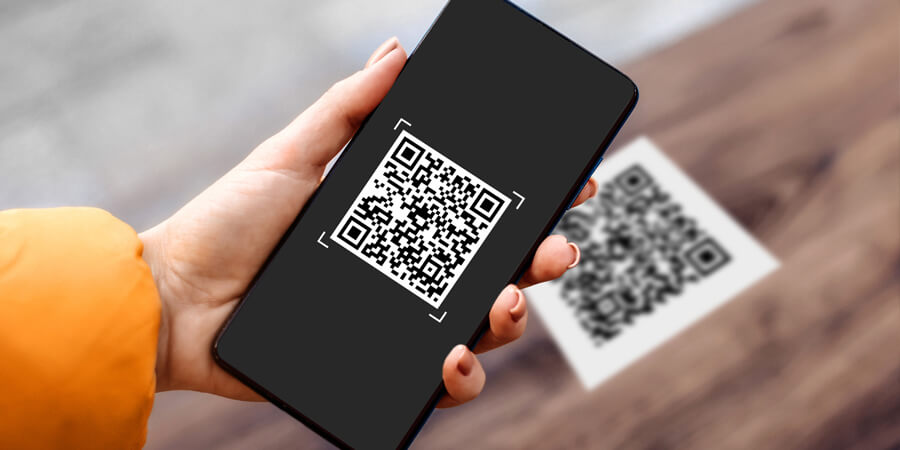As the world's second-largest continent, Africa has experienced a remarkable surge in smartphone adoption, resulting in a substantial increase in the number of smartphone users. This trend has led various industries in African countries to seek innovative ways to engage with the tech-savvy population.
The mobile revolution in Africa has yielded a noteworthy result: the swift embrace of mobile payments. Within the realm of various payment methods, QR codes have emerged as a straightforward yet potent technology, ensuring secure transactions for both customers and merchants. Notably, the QR code payment sector has experienced a remarkable surge in recent years, with projections indicating a substantial global market value of US$9.98 billion in 2022.
In Nigeria, "Scan to Pay" has become a widely popular method where merchants can display QR codes supporting Visa and MasterPass through local QR codes. This allows customers to conveniently scan the QR code with their banking apps and make direct payments from their bank accounts. Similarly, in South Africa, QR code technology has gained significant traction, revolutionizing digital transactions. This transformation can be traced back to the brand progression of Masterpass to the innovative solution known as "Scan to Pay," powered by Ukheshe, a financial institution in South Africa.
The success of QR code payments can be attributed to their compatibility with almost any mobile handset equipped with a camera, making them a versatile tool for enabling digital transactions. However, Ukheshe's Scan to Pay distinguishes itself by integrating USSD (Unstructured Supplementary Service Data) technology. Along with the QR code, a 10-digit number is displayed, resembling the USSD format that South Africans are familiar with, starting with * and ending with #. USSD's user-friendly nature has made it an ideal platform for delivering mobile financial services to a broader audience, including low-income customers, thereby contributing significantly to enhanced financial inclusion in the country.
Furthermore, for businesses, the adoption of Scan to Pay offers several significant benefits. Implementing QR code payments is cost-effective and straightforward, whether through e-commerce checkout, merchant websites, or face-to-face transactions. This accessibility makes QR superior to many other digital payment options that are usually limited to specific contexts or online environments. With broader acceptance points, businesses can accept payments both online and in person, providing consumers with increased payment choices, including transactions through their own banking apps.
On the other hand, security is a top concern for both merchants and consumers in the digital payments landscape. Here, Scan to Pay's QR code technology shines, especially its compatibility with bank applications. By integrating with well-established banking apps, the trustworthiness of these platforms combined with the inherent security features of QR code transactions reinforces the protective framework of the process. The transaction process itself incorporates multiple security protocols, such as cross-verifying the origin of the phone number against the card number entered by the customer, ensuring a secure and reliable payment experience.
Beyond these advantages, what makes QR codes truly exciting is their versatility and the potential for industry-specific use cases. From street vendors and microbusinesses to large supermarkets, petrol stations and national service providers, QR payments extend beyond everyday purchases to cover utilities, fines and taxes. As QR technology becomes more convenient, affordable and widespread, it is set to become the preferred method of payment, gradually outweighing the benefits of cash transactions. For low-income earners, who are often affected by challenges such as limited access to ATMs and the risk of theft associated with cash withdrawals, QR codes offer a powerful solution, breaking down barriers to full economic participation and financial inclusion.
As the largest QR ecosystem in South Africa, Ukheshe's Scan to Pay has been thoroughly tested and trusted by millions of merchants and consumers. Its wide adoption is evident in its status as the QR payment platform of choice for over 500,000 vendors, 14 banks and fintech companies, 94 payment service providers and six acquirers. Furthermore, Scan to Pay QR payments are integrated into all major banking apps in the country, and the dedicated Scan to Pay app is readily available for download on most mobile devices.
In conclusion, Scan to Pay is revolutionizing QR code payments in South Africa, unleashing the potential of mobile payments and driving financial inclusion. The innovative combination of QR codes and USSD technology, coupled with its simplicity, security and versatility, positions Scan to Pay as a powerful force in the country's payment landscape. As more consumers and businesses embrace this convenient and secure payment method, the future of digital transactions in South Africa looks promising, bringing financial services to all segments of society and contributing to a more inclusive economy.







